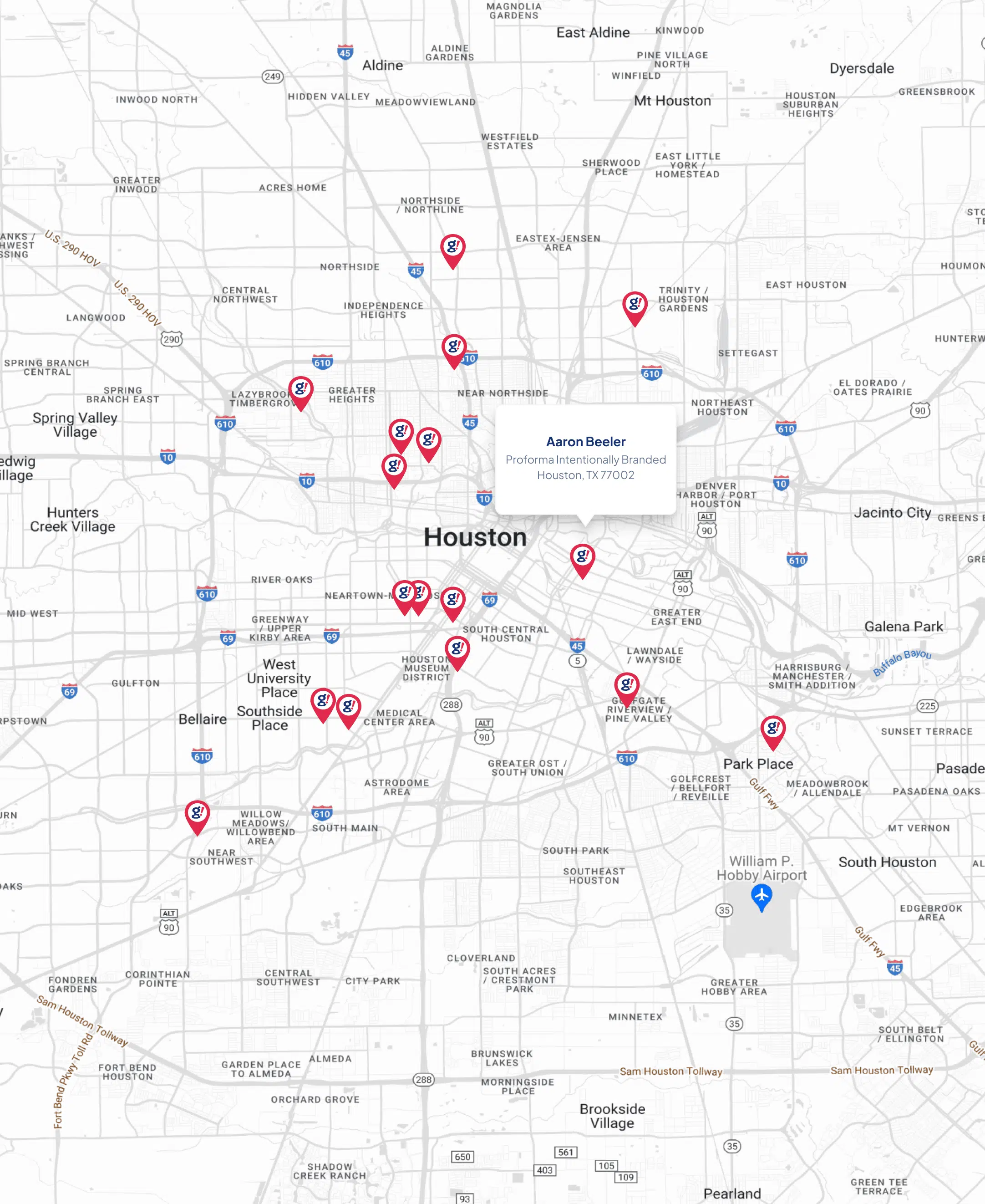Redefining SEO Automation: 10 Kinds of SEO Automation You Didn’t Know You Needed
- Updated on: 2021-05-16
- Read original article here

If you leverage SEO tools for rank tracking and keyword research, you’ve automated your SEO.
Well, not so much.
The sites that crowd the SERP for the query “seo automation tools” are far off from the automation that enterprise SEOs need to succeed in the world of search today.
Don’t blame Google: The search engine is delivering upon searchers’ expectations of what they believe automation to be. But this classification barely touches the surfaces of true AI and automation in SEO, and dilutes its meaning.
It’s time to re-evaluate how we think about automation in SEO.
You see, there’s what people callautomation, and what is actuallyautomation.
True, useful automation in SEO consists of advanced processes that help you make sense of the heaps of data that sit before you, so you can reduce the time to action and move from data, to insights, to execution faster than before.
More on this down below, when we discuss thetwo main types of automation.
Yes, a rank tracking tool does show you ranking data so you don’t have to manually monitor the SERPs and position changes yourself, but just because something is not manual work does not make it automation— or at least, it’s not the automation that enterprise SEOs need.
“Automation” is a classification that should not be given so freely, because true SEO automation revolutionizes the way to approach organic search.
Much of the seoClarity platform is built around AI, machine learning, and automation, and this creates a fundamental shift in how SEOs spend their time.
Automation is a necessity if you want to be able to handle the large datasets of your enterprise site.
Things move so fast, after all, that by the time you go to implement a fix or update, the data already tells a different story.
There’s simply too much data to make sense of on your own.
In fact, I heard from 20 enterprise experts that scalability is one of their biggest challenges.
It’s time that automation joins the scalability conversation. Automation is a surefire way to ensure scalability, since you offset SEO tasks to technology so you can prioritize your time where it counts.
Despite its ability to revolutionize how you approach SEO, many don’t realize the true capabilities of SEO automation, or the vast problems it solves. Actually, some may not even realize that automation is the solution to their problems that they’ve been looking for!
There are really two ways to look at automation:
Data to insight in automation acts as a filtering mechanism. At the top of the filter is the data. There is just so much data that it’s nearly impossible to make sense of it and tell a story.
The funnel is the automation (the technology working its magic behind the scenes). What comes out of the funnel are the insights that you can operate on.
The second type of SEO automation is more of a task management process that you have running in the background. These are mundane tasks that need to be done that you can hand over to technology.
Setting up recurring crawls is an example. When you do this, you skip the need to constantly set the crawl parameters, and can instead give the project your attention when the crawl is complete.
Another example would be a tool that automatically monitors and alerts you to changes to your critical pages so you can catch the ones that might damage your SEO.
Powerful SEO technology allows you to integrate automation into multiple areas of your organic search processes. More importantly, it allows you to solve real problems.
Enterprise SEOs have access to so much data that you probably don’t even know where to start. The insights that will lead to rank improvements, a better user experience, traffic, and conversions are in there somewhere, but how do you isolate them?
This is something we’ve seen far too commonly with our enterprise clients. It’s also why we built Actionable Insights — your SEO Analyst that works 24/7, but beyond human capabilities.
It automatically monitors and analyses your site data to reveal more than 120 validated and verified insights that you can act on now.
Many people and teams touch your website — developers, UX teams, marketing teams, and of course, you — which can lead to fatal errors that damage your rankings.
For a site with thousands or millions of pages, it’s impossible to know what exactly changed on your site!
You can use the power of automation in Content Guard to be alerted when specific site elements change, so you’ll no longer be in the dark about what changed, when it changed, and what it was like before the change.
When you make a dynamic update to your content site-wide, it’s important to verify that the change (whatever it may be) was noticed by Google. Otherwise, you may cross a task off your to-do list when Google in fact has no idea of the change that was made, and doesn’t present it to users.
Manually browsing each page to ensure the changes took effect is no viable solution, so again we turn to automation — this time, content change alerts.
We all know that content has to be authoritative to rank, among other things. But understanding a subject matter well enough to create quality content that performs within the search engines and tracks your target audience, all at scale, with natural human limitations … that’s a challenge.
This is why content marketers turn to content optimization and analysis tools to create content faster than over before.
The AI-driven content analysis tool, Content Fusion, automatically analyzes the top ranking content to understand and present to you how to create the most authoritative content.
With a few clicks, you’ll uncover the topic areas you need to include in your content, the context behind those topics, and ideal content lengths and metadata, effectively cutting your research time down to a few minutes instead of hours.
Plus, internal link recommendations make it easy to strengthen your topic clusters while offering a relevant path to your end users.
The SEO content creation process is dense. So much goes into planning a strong content asset. From keyword research, to gathering questions to answer, and crafting the perfect meta description.
Not to mention, handing over this key information to your content writers and expecting them to follow through on your expectations.
With Content Fusion’s ability to auto generate content briefs, you automate your research and planning process ten fold. All you have to do is enter your target keyword, and let the technology do the rest for you.
It’s challenging enough to monitor your own site changes and rank positions, then you have to factor in the competition. Your competitors can offer you invaluable insights for your own SEO strategy, so this is not something to let slip by the wayside.
Competitor alert changes in seoClarity tell you when competitor site elements change, or the competitor begins to outrank you in the SERPs.
Crafting reports and sending them to the appropriate team members or stakeholders takes time, but it’s an absolute requirement. You need to constantly prove out that the organic search channel is yielding results.
Automated dashboard reports that are automatically sent through email help you manage this task, so you no longer need to compile, organize, and send reports from scratch.
Maintaining a positive site experience for your end user is a core component of successful SEO. Your site needs to be built on a strong foundation with fast page loading, easy navigation, proper and helpful internal links, and plenty more to offer a positive user experience.
Automation lends itself to a strong site health by detecting and assigning issue a priority level so you know which technical SEO issues to resolve first.
In addition, skip the redundant setup process with ad-hoc crawls to gain this data and move to recurring crawls that constantly bring back the freshest look at your site health.
These crawls return invaluable insights so you can continuously optimize for the end user experience. Find issues like broken links and duplicate content, validate pagination, crawl JavaScript, and even capture Hreflang. With seoClarity, there aren't limitations placed on your site crawls or crawl projects.
Searchers today will type anything and everything into Google search because they know they’ll get results back. With so many ways to search (paired with human limitations) it’s impossible to understand all the ways your users search.
Topic Explorer’s Intelligent Match finds hidden connections between topics so you can align your content with the way your audience searches.
Maybe your users search for “indestructible chew toys” — or maybe they search for “chew resistant dogs toys,” “unbreakable dog toy,” or “unchewable dog toy.”
Intelligent Match uncovers and connects all of these queries so you can create the most authoritative content for your topic cluster.
It’s not enough to understand what users search for, you need to know the intent behind the search, too (and create your content accordingly).
Content has to be relevant in order to be of value to searchers.
You can of course scour the SERPs to get a clue of a query’s underlying intent, and compare it against other queries as well, but working keyword to keyword is a thing of the past.
After you’ve applied Intelligent Match to uncover the ways your audience searches, use our Audience Similarity metric to find the level of similarity between the topics’ underlying intent.
This way, you’ll know which topics to cover with a single piece of content, and which deserve their own page.
These are insights that would be impossible for a human to do manually.
SEOs often know what problems exist and what needs to be changed (if you don’t, automation is always there to help). Then comes the real challenge for enterprises: Actually making the changes in a timely fashion that gets prioritized.
Internal IT challenges, infrastructure issues, and a lack of resources all make it difficult to implement change — even though you know it will have a positive effect.
Instead of manually editing site elements like title tags, meta descriptions, canonical tags, structured data (and plenty more) on a page-by-page cadence, you can now use automation to immediately update these components all directly from seoClarity.
A simple edit or addition that you make with the technology creates a real-time change on your live site.
No more chasing down content writers, developers, and production teams for weeks on end to fulfill a project that will now take minutes.
Automation makes you the “CEO of your SEO.”
Think about it.
You get the necessary data and insights without getting your hands dirty. There are still human decisions to be made, but with automation you can make those faster and better.
It’s time that we start to think of SEO automation as something more than the minimum expectation. Enterprise SEOs need technology capable of scale, efficiency, and accuracy, so they can prioritize their time and focus on what matters.



